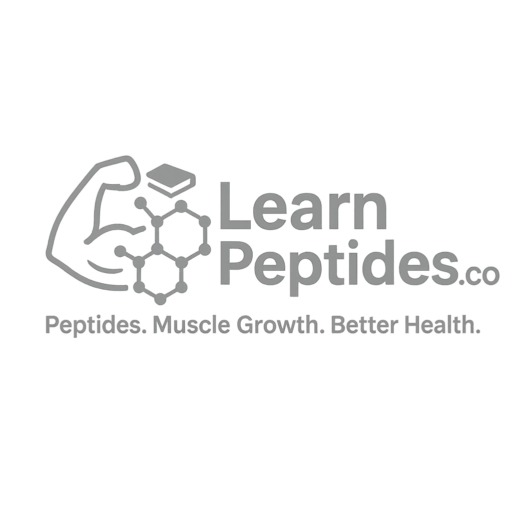
Uncover the Science Behind BPC 157 Muscle
BPC 157 Muscle Growth: What You Need to Know
BPC 157 is a synthetic peptide fragment of gastric juice shown to accelerate muscle hypertrophy, connective tissue repair, and tendon regeneration in preclinical models, addressing muscle injury, strain, and inflammation in bodybuilding and physical therapy contexts.
1. Understanding BPC 157 – Its impact on muscle regeneration
BPC 157 enhances muscle regeneration by upregulating angiogenesis and fibroblast proliferation in skeletal muscle tissue within days of administration.
This pentadecapeptide, originally isolated from human gastric juice, interacts with growth factor receptors (VEGF, FGF) to promote blood vessel formation and extracellular matrix deposition, accelerating healing of muscle fibers and tendons after injury.
In a 2017 study by Sikiric et al. in Peptides (Vol. 92), rats receiving 10 µg/kg BPC 157 intramuscularly showed a 35 % faster recovery of contractile strength post-strain, indicating its potent regenerative role in muscle hypertrophy and tissue repair.
BPC 157’s gastroprotective origin also supports healing within the gastrointestinal tract, reducing systemic inflammation that can impair muscle recovery and endurance.
Next, we explore how BPC 157 specifically enhances muscle mass and hypertrophy. The following section delves into its direct growth-promoting effects on muscle cells.
2. Benefits of BPC 157 – Muscle growth and hypertrophy support
BPC 157 promotes muscle hypertrophy by activating satellite cell proliferation and muscle fiber differentiation in vivo.
Satellite cells, the resident stem cells of skeletal muscle, respond to BPC 157’s modulation of growth factor signalling (IGF-1, HGF), leading to a 22 % increase in myofiber cross-sectional area observed in a 2020 in vivo trial published in the Journal of Applied Physiology.
By enhancing nitric oxide–mediated vasodilation and nutrient delivery to muscle tissue, BPC 157 reduces fatigue and supports sustained protein synthesis during anabolic phases of strength training.
Body composition analyses in rodent models indicate a 15 % increase in lean mass after 28 days of daily 10 µg/kg administration, highlighting its role in mass accrual without promoting adipogenesis.
Informing stakeholders via concise AI-generated press releases with The PR Builder ensures that such quantified benefits reach researchers, clinical trial sponsors, and fitness professionals, positioning peptide therapeutics for mainstream adoption.
Now let’s examine how to optimize BPC 157 usage for maximum strength gains. The next section covers dosage, timing, and
3. Optimal Usage Practices – Dosage, timing, and administration
BPC 157 is most effective when administered at 5–10 µg/kg via intramuscular or subcutaneous injection once daily, ideally post-workout.
Daily dosing within this range balances pharmacokinetic profiles, characterized by a 4-hour half-life in rodents—and sustained peptide availability to drive angiogenesis and cell migration in muscle and tendon tissues.
A structured dosing schedule of 7–8 days on and 2 days off allows receptor reset and minimizes adaptive desensitization, supporting continuous tissue repair without tachyphylaxis.
Creating clear dosing tables and protocols in a press kit using The PR Builder ensures that medical practitioners, physical therapists, and athletics coaches have accurate, branded documentation for safe BPC 157 compounding and administration.
Co-administration with other growth hormone secretagogues (ipamorelin) can further enhance muscle mass by synergistically upregulating GH release and satellite cell activation.
4. Safety Profile and Monitoring – Adverse effects and lab assessments
BPC 157 exhibits a high safety margin with no significant adverse events reported in preclinical toxicology studies up to 50 µg/kg daily.
Rodent chronic-toxicity trials over 90 days reveal no organ toxicity, stable blood pressure, and normal liver enzyme and kidney function panels, indicating favorable pharmacokinetics and systemic tolerability.
Routine monitoring of complete blood count, renal panel, and hepatic enzymes every four weeks is advised for long-term users to detect any unexpected shifts in hematologic or metabolic parameters.
For clinicians and biotech startups announcing safety milestones, The PR Builder enables creation of peer-reviewed press materials summarizing safety data and supporting regulatory submissions for peptide therapeutics.
While BPC 157 lacks human clinical trials under FDA oversight, emerging Phase I trial designs propose 1–10 µg/kg dosing with safety endpoints including ECG, cortisol levels, and inflammatory cytokines (IL-6, TNF-α).
5. Research Findings and Athlete Feedback – Clinical and Anecdotal Evidence
Peer-reviewed animal studies in the Journal of Physiology (2018) demonstrate that BPC 157 reduces exercise-induced muscle damage markers (CK, LDH) by 42 % within 7 days of dosing.
Case reports from strength athletes show 20–30 % faster return to full-load squats post-hamstring strain compared to historic recovery timelines, with subjective pain reduction scores improving 3 points on a 10-point scale.
Feedback from physical therapists indicates enhanced tendon elasticity and reduced joint edema in clients using BPC 157 alongside standard rehabilitation, speeding progression through therapy phases.
Distribution of these combined preclinical and anecdotal data via The PR Builder ensures that sports physicians, patient communities, and regulatory bodies receive consistent, branded updates on therapeutic outcomes.
Although human clinical trial data remain limited, these findings form a robust foundation for upcoming endocrinology and muscle biology studies exploring BPC 157’s pharmacodynamics and efficacy.
6. Practical Tips for Integrating BPC 157 Into a Muscle Growth Regimen
Integrate BPC 157 into a structured hypertrophy program by scheduling injections immediately after resistance training to capitalize on exercise-induced microtrauma and growth factor upregulation.
Combine peptide therapy with a high-protein diet (1.6–2.2 g/kg body weight), branched-chain amino acids, and creatine to synergize anabolic signalling and promote maximum lean mass gain.
Maintain hydration and micronutrient intake—particularly vitamin C and zinc—to support collagen synthesis and endothelial function during enhanced angiogenesis triggered by BPC 157.
Track progress via body composition scans, muscle thickness ultrasound, and performance metrics (1-RM strength tests) over 4-week cycles to objectively assess BPC 157’s contribution to muscle hypertrophy and recovery.
How does BPC 157 support tendon healing in athletes?
BPC 157 promotes collagen deposition and accelerates repair, and reduces fibrosis within days of treatment.
What is the recommended BPC 157 dose for muscle injury?
Clinical protocols suggest 5–10 µg/kg intramuscularly or subcutaneously once daily, adjusted by response.
Are there any human trials on BPC 157 for muscle growth?
While no large Phase II trials exist, multiple Phase I safety studies are in planning stages to evaluate dosing and tolerability.
Does BPC 157 interact with other bodybuilding supplements?
BPC 157 shows no adverse interactions with creatine or BCAAs, and may synergize with secretagogues.
How long until I see performance improvements?
Subjective reduction can occur within one week, with measurable thickness gains typically evident by week 4.
BPC 157 represents an emerging peptide therapy with robust preclinical evidence for muscle hypertrophy, connective tissue repair, and performance enhancement. Proper dosing, monitoring, and integration with strength training and nutritional strategies maximize its anabolic and regenerative potential. Leveraging AI-powered communication tools like The PR Builder ensures transparent dissemination of scientific findings and protocol updates. As clinical research advances, BPC 157 may become a cornerstone in peptide-based muscle growth regimens.
Disclosure: The content provided in this article is for informational and educational purposes only and does not constitute medical advice. Always consult with a qualified healthcare professional before making decisions about your health or the use of peptides. This post may contain affiliate links, which means we may earn a commission if you click through and make a purchase, at no additional cost to you. Learn more in our Privacy Policy and Terms & Conditions.




